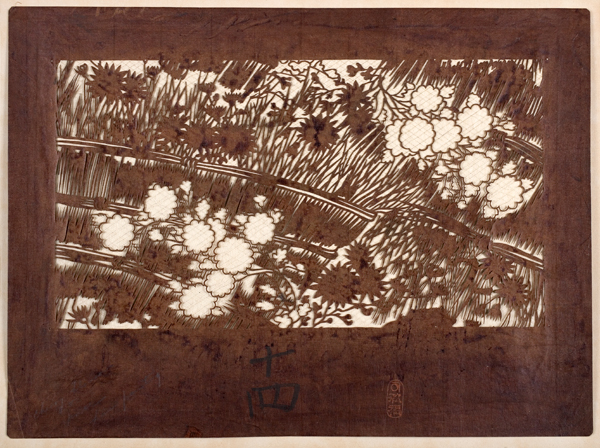
December 3, 2014 - August 30, 2015
Chinese Gallery
Above: Chrysanthemums and Brushwood Fence, late 19th century, Ise Province, carved stencil, hand-carved mulberry paper laminated with persimmon juice; applied silk netting, Mrs. Kingsmill Marrs Collection, 1925.679
Japanese stencils (katagami), used for dyeing patterns on cloth (katazome), can be appreciated as independent works of art. They are traditionally made of multi-layered sheets of handmade mulberry paper made durable by being laminated together and waterproofed by the use of tannin-rich persimmon juice. The katagami are then usually strengthened by means of very fine silk threads.
These works were first collected in the early twentieth century by Western designers, artists and collectors of Japanese art, including famous art educator Arthur Wesley Dow (1857-1922) and his student H. Stuart Michie, head of the School of the Worcester Art Museum from 1909 to 1938.

 Sign up for WAM eNews
Sign up for WAM eNews